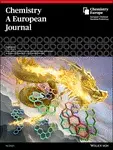
The dihalogenation of alkenes is one of the classic reactions in organic chemistry and a prime example of an electrophilic addition reaction. The often observed anti-selectivity in this addition reaction can be explained by the formation of a haliranium-ion intermediate. Although dihalogenations have been studied for more than a century, the development of reagent-controlled, enantioselective dihalogenation has proved to be very difficult. Only recently, significant progress has been achieved. In this review, an overview on current method development in enantioselective dihalogenation is provided and mechanistic aspects that render this transformation challenging are discussed.
Link to Publisher’s page:
Enantioselective Dihalogenation of Alkenes - Bock - 2021 - Chemistry – A European Journal - Wiley Online Library
